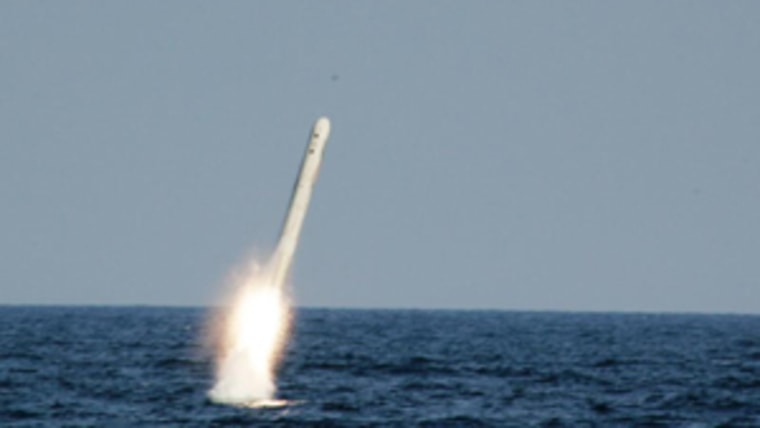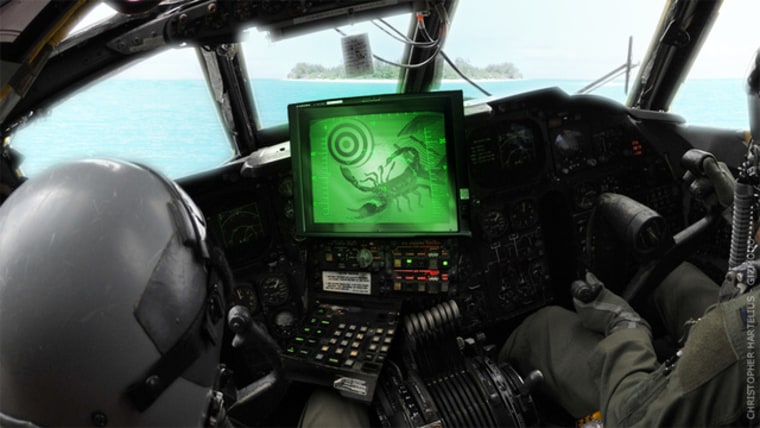So, let's say our armed forces were in a conflict where they had to enforce a no-fly zone without deploying troops on the ground (*cough* *cough* Libya *cough*). How would they do that? Simple: GPS. Oh, and lasers. And mechanized ordnance that is better at navigating than any meatbag with a map.
In a tense conflict like Libya, where nobody — including the American public — wants U.S. troops stomping around, it might seem like military options are limited. They are — to a gang of super-smart, incredibly accurate missiles and bombs launched from the ocean and sky. In some cases, a missile's solo journey can originate from a submerged submarine hundreds of miles from its target. Which raises the question: Wait, how can it hit a target the size of a shipping container from, like, another country?
It all starts with a plan. Before, say, a $607,000 Tomahawk land attack missile ever leaves the launch tube, it's programmed with a set of instructions—called a pre-mission plan—that tells it where to, ahem, land. The guide includes the latitude and longitude of the target as well as the coordinates for up to 15 other alternate endings. (Choose your own adventure, anyone?) Also loaded are stored images of the flight path, which come in handy later.
Getting from point A (say, a sub) to point B (say, a bunker) requires an intricate set of negotiations that the Tomahawk handles on the fly. After our 20-foot-long projectile protagonist pops out of the ocean, it levels low to the water in order to dodge enemy radar. Moving at up to 550 mph, the missile is guided by a GPS system similar to the ones 747s use, and a system called Terrain Contour Matching.
"TERCOM" takes note of the immediate landscape, but it's not about sightseeing. The Tomahawk instead compares real time data from its altimeter and radar with satellite imagery from a stored database to make sure it's precisely on course. It's kind of like looking at Google Street View while you walk through a neighborhood. If the missile finds that it has zigged off its route or desired altitude, it aligns itself with the right topography to get back on track.
But things change rapidly in conflict, so the 3,330-lb. Tomahawk Block IV has built-in ability to react to situations like a last-minute change in targeting. In these cases, GPS location data gets updated via a two-way satellite link, and the missile takes an alternate route to another end point.
Haven't determined the new target yet?
"The missile can go into a loitering mode," explains a super-secret Navy official whose name we can't use. "It's not as dramatic as a hover, but it will fly loops in the air, and it will await further tasking."
Remember that stored image of the route to the enemy destination included in the pre-mission plan? Well, if there aren't any changes mid-flight, the missile compares the picture of the route with what's on the ground.
"It adjusts based on what it sees," says the Navy official. When everything matches up: Boom. No more shipping container.

Destruction doesn't only come from the sea, either. Other super-accurate systems, such as certain Guided Bomb Units (GBU) carried on F-15E Strike Eagle planes, use lasers and fins for guidance. Before ever leaving the ground, the bombs are programmed to look for a certain laser signature — the same laser signature that the plane is programmed to "paint" on its enemies. See, the bombs are ravenous for these beam-illuminated spots, but their attraction needs to be very, very specific. The Air Force doesn't want Jet No. 1's bomb hitting Jet No. 2's target (or, like, a grocery store) by accident.
F-15Es have what's called a targeting pod that allows weapons systems officers to look for targets using infrared and electro-optical imaging. You've seen this setup on TV; it's the screen with the crosshairs on it. Once they find the correct spot, the targeting pod computes the coordinates. Then, the jet's computer calculates where the pilot needs to fly and when the bomb needs to drop.
When the range is right, the pilot hits the "pickle button" (for serious — that's what it's called) and the laser-guided bomb is dropped from something like 20,000 feet. From here, the on-bomb computer plays a game of "find the laser." Bombs are equipped with a glassed-over seeker that kind of looks like an eye. When the seeker locates the laser-illuminated target below, the computer tells the bomb how to move its fins to navigate the free fall.
"We can hit anything: buildings, cars, holes in the ground — really, there's no limitation," says Maj. Ryan Ismirle, who flew F-15Es in Afghanistan. "I've never seen one — especially in combat — that hasn't hit its target."
More from Gizmodo:
